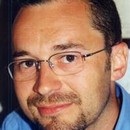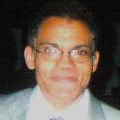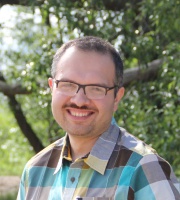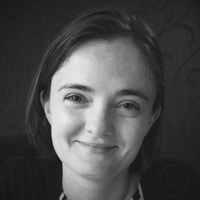Invited Speakers Abstracts

Gianluigi Zavattaro, Università di Bologna, Italy
Automatic Application Deployment in the Cloud: from Practice to Theory and Back
Abstract: The problem of deploying a complex software application has been formally investigated in previous work by means of the abstract component model named Aeolus. As the problem turned out to be undecidable, simplified versions of the model were investigated in which decidability was restored by introducing limitations on the ways components are described.
In this paper, we take an opposite approach, and investigate the possibility to address a relaxed version of the deployment problem without limiting the expressiveness of the component model.
We identify three problems to be solved in sequence: (i) the verification of the existence of a final configuration in which all the constraints imposed by the single components are satisfied, (ii) the generation of a concrete configuration satisfying such constraints, and (iii) the synthesis of a plan to reach such a configuration possibly going through intermediary configurations that violate the non-functional constraints.

James Worrell, University of Oxford, UK
Reachability Problems for Continuous Linear Dynamical Systems
Abstract: It is well understood that the interaction between discrete and continuous dynamics makes hybrid automata difficult to analyse algorithmically. However it is already the case that many natural verification questions concerning only the continuous dynamics of such systems are extremely challenging. This remains so even for linear dynamical systems, such as linear hybrid automata and continuous-time Markov chains, whose evolution is detemined by linear differential equations. For example, one can ask to decide whether it is possible to escape a particular location of a linear hybrid automaton, given initial values of the continuous variables. Likewise one can ask whether a given set of probability distributions is reachable during the evolution of continuous-time Markov chain.
This talk focusses on reachability problems for solutions of linear differential equations. A central decision problem in this area is the Continuous Skolem Problem, which asks whether a real-valued function satisfying an ordinary linear differential equation has a zero. This can be seen as a continuous analog of the Skolem Problem for linear recurrence sequences, which asks whether the sequence satisfying a given recurrence has a zero term. For both the discrete and continuous versions of the Skolem Problem, decidability is open.
We show that the Continuous Skolem Problem lies at the heart of many natural verification questions on linear dynamical systems. We describe some recent work, done in collaboration with Chonev and Ouaknine, that uses results in transcendence theory and real algebraic geometry to obtain decidability for certain variants of the problem.
In particular, we consider a bounded version of the Continuous Skolem Problem, corresponding to time-bounded reachability. We prove decidability of the bounded problem assuming Schanuel's conjecture, one of the main conjectures in transcendence theory. We describe some partial decidability results in the unbounded case and discuss mathematical obstacles to proving decidability of the Continuous Skolem Problem in full generality.

Mohammad Reza Mousavi, Halmstad University, Sweden
Mohammad Reza Mousavi (invited). From Concurrency Theory to Testing Cyber-Physical Systems
Abstract: We review and compare three notions of conformance testing for cyber-physical systems. We begin with a review of their underlying semantic models and present conformance-preserving translations between them. We identify the differences in the underlying semantic models and the various design decisions that lead to these substantially different notions of conformance testing. Learning from this exercise, we reflect upon the challenges in designing an "ideal" notion of conformance for cyber-physical systems and sketch a roadmap of future research in this domain.

Alexandra Silva, Radboud University, The Netherlands
Applications of Automata and Concurrency Theory in Networks
Abstract: Networks have received widespread attention in recent years as a target for domain-specific language design. The emergence of software-defined networking (SDN) as a popular paradigm for network programming has led to the appearance of a number of SDN programming languages seeking to provide high level abstractions to simplify the task of specifying the packet-processing behavior of a network.
Previous work by Anderson et al. introduced NetKAT, a language and logic for specifying and verifying the packet-processing behavior of networks. NetKAT provides general-purpose programming constructs such as parallel and sequential composition, conditional tests, and iteration, as well as special-purpose primitives for querying and modifying packet headers and encoding network topologies. In contrast to competing approaches, NetKAT has a formal mathematical semantics and an equational deductive system that is sound and complete over that semantics, as well as a PSPACE decision procedure. It is based on Kleene algebra with tests (KAT), an algebraic system for propositional program verification that has been extensively studied for nearly two decades. Several practical applications of NetKAT have been developed, including algorithms for testing reachability and non-interference and a syntactic correctness proof for a compiler that translates programs to hardware instructions for SDN switches. In a follow-up paper the coalgebraic theory of NetKAT was developed and a bisimulation-based algorithm for deciding equivalence was devised. The new algorithm was shown to be significantlymore efficient than the previous naive algorithm, which was PSPACE in the best case and the worst case, as it was based on the determinization of a nondeterministic algorithm. Along with the coalgebraic model of NetKAT, the authors presented a specialized version of the Brzozowski derivative in both semantic and syntactic forms. They also proved a version of Kleene's theorem for NetKAT that shows that the coalgebraic model is equivalent to the standard packet-processing and language models introduced previously. They demonstrated the real-world applicability of the tool by using it to decide common network verification questions such as all-pairs connectivity, loop-freedom, and translation validation---all pressing questions in modern networks.
This talk will survey applications of automata theory, concurrency theory and coalgebra to problems in networking. We will suggest directions for exploring the bridge between the two communities and ways to deliver new synergies. On the one hand, this will lead to new insights and techniques that will enable the development of rigorous semantic foundations for networks. On the other hand, the idysiocransies of networks will provide new challenges for the automata and concurrency community.
25th Anniversary Speech Abstract

Matthew Hennessy, Trinity College Dublin, Ireland
Behavioural Equivalences for Co-operating Transactions
Abstract: Relaxing the isolation requirements on transactions leads to systems in which transactions can now co-operate to achieve distributed goals. However in the absence of isolation it is not easy to understand the desired behaviour of transactional systems, or the extent to which the other standard ACID properties of transactions can be maintained: atomicity, consistency and durability. In this talk I will give an overview of some recent work in this area, outlining semantic theories for a process calculus which has been augmented by a new construct for co-operating transactions.



